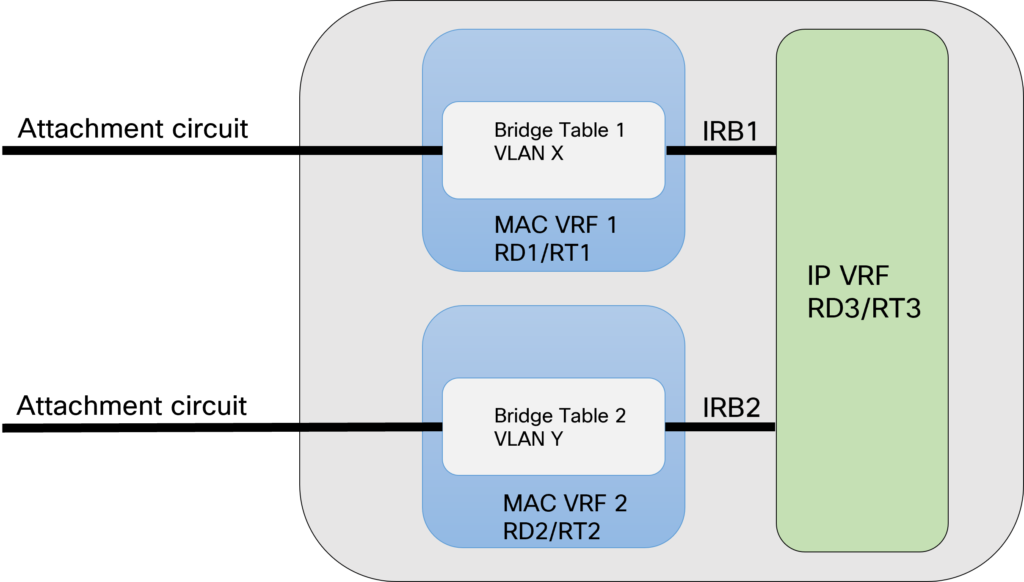Reading RFCs is a great source of information for understanding all the details of a protocol. Often they do require the reader to be quite technical and the terminology can be confusing if you aren’t used to the type of language and writing style used in RFCs. In this post, I go through some of the most important terminology in EVPN and VXLAN to help you build your understanding of the different forwarding constructs and how they interact.
The picture below shows some of the most important terminology in EVPN:

Let’s go through the terms used in the diagram and some additional ones:
- Attachment circuit – An interface that is associated with a bridge table. The AC that the packet arrived on is determined by examining the port, and optionally VLAN tag.
- Broadcast Domain – The Broadcast domain consists of all devices and hosts that would receive a broadcast frame when sent in that domain (assuming no ARP optimization features used). This is normally a VLAN, and it normally maps to one subnet. From a VXLAN perspective, it would be a L2 VNI. An EVI may contain one or more BDs depending on service model.
- Bridge Table – Bridge Table is the instantiation of a broadcast domain in an NVE. Commonly, there is only one BD on a given EVI, meaning that the MAC VRF is equivalent to the BT on that NVE.
- BUM – Broadcast, Unknown Unicast, and Multicast frames.
- EVI – Ethernet VPN Instance is a VPN that spans NVEs. A MAC VRF is an instantiation of EVI on an NVE.
- IRB – Integrated Routing and Bridging. It’s the logical interface that connects the Broadcast Domain/Bridge Table to the IP VRF. It forwards packets with destination that is not local.
- IP VRF – The IP Virtual Routing and Forwarding table that stores IP prefixes part of the tenant’s IP space. A Route Distinguisher and Route Target is required.
- MAC VRF – Virtual Routing and Forwarding table for MAC addresses. The MAC VRF is an instantiation of an EVI. It also requires an RD and RT.
- NVE – Network Virtualization Edge. Device that implements L2 and/or L3 network virtualization functions. Uses the underlying L3 network to tunnel tenant frames to and from other NVEs.
- RD – Route Distinguisher is a 64-bit prefix that is appended to the IP prefix to make it unique as different tenants may use the same IP space.
- RT – Route Target is an extended community in BGP that is used to control the import and export of routes.
I hope you find this informative and see you in the next one!
EVPN Terminology
Thank you so much dib
Very informative terminology you have shared..
Thanks!